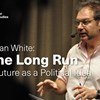recession
Poverty trends during two recessions and two recoveries: Lessons from Sweden 1991—2013
IZA Journal of European Labor Studies 5:3. DOI 10.1186/s40174-016-0051-8. Abstract We study cross-sectional and long-term poverty in Sweden over a period spanning two recessions, and discuss changes in th

Paul Levin: What does the future hold for the Swedish Nato accession process?
What is the current state of play in the negotiations between Sweden, Finland, and Turkey over NATO accession? Is Finland going it alone and, if so, what would that mean for Sweden and NATO? What can
Applying spatial regression to evaluate risk factors for microbiological contamination of urban groundwater sources in Juba, South Sudan
Hydrogeology Journal 25(4) pp. 1077-1091, doi: 10.1007/s10040-016-1504-x Abstract This study developed methodology for statistically assessing groundwater contamination mechanisms. It focused on microbiahumanitarian aid organisation Médecins Sans Frontières in 2010. The factors included hydrogeological settings, land use and socio-economic characteristics. The results showed that the residuals of a conventional probit regression model had a significant positive spatial autocorrelation (Moran’s I =3.05, I-stat = 9.28); therefore, a spatial model was developed that had better goodness-of-fit to the observations. The mostsignificant factor in this model (p-value 0.005) was the distance from a water source to the nearest Tukul area, an area with informal settlements that lack sanitation services. It is thus recommended that future remediation and monitoring efforts in the city be concentrated in such low-income regions. The spatial model differed from the conventional approach: in contrast with the latter case, lowland topography was not significant at the 5% level, as the p-value was 0.074 in the spatial model and 0.040 in the traditional model. This study showed that statistical risk-factor assessments of groundwater contamination need to consider spatial interactions when the water sources are located close to each other. Future studies might further investigate the cut-off distance that reflects spatial autocorrelation. Particularly, these results advise research on urban groundwater quality.
Childbearing of Students: The Case of Sweden
This paper examines childbearing behavior among Swedish students, and mothers’ enrolment in education in 1984-1999. The student financial aid reform in 1989 had no noticeable impact on students’ child
The College-to-Work Transition during the 1990s. Evidence from Sweden
This paper analyzes the time it takes for Swedish college graduates to start a full-time job that lasts for six month or more, the study period being 1991–1999. The results show that the risk of unemp

The Future as a Political Idea - Professor Jonathan White
Introduction to Jonathan White's new book In the Long Run: the Future as a Political Idea. A revealing history of the future as a political idea, from the Enlightenment to the current climate crisis.
Children of austerity
Nearly ten years after the first financial chock Waves rippled through the world economy, generating a global recenssion, the track record of high income countries in protecting Children from its worsoch .
New report on child poverty
No increase in child poverty in Sweden. That is the conclusion in a new report written by Carina Mood and Jan O. Jonsson; Ekonomisk utsatthet och välfärd bland barn och deras familjer 1968–2010, where chi
John A. Ferejohn: Political Economy and Immigration: A Seven Nation Study
John A. Ferejohn, Professor of Law, New York University School of Law Abstract In many advanced democracies the major political parties have been disrupted either by the rise of new (populist) parties o
(NEW SEMINAR REPLACING LUKAS MEYER) > Jonathan White: In the Long Run - the Future as a Political Idea
Venue: Institutet för framtidsstudier, Holländargatan 13, 4th floor, Stockholm, or online. Research seminar with Jonathan White, Professor of Politics, London School of Economics. -- Please note that thi








